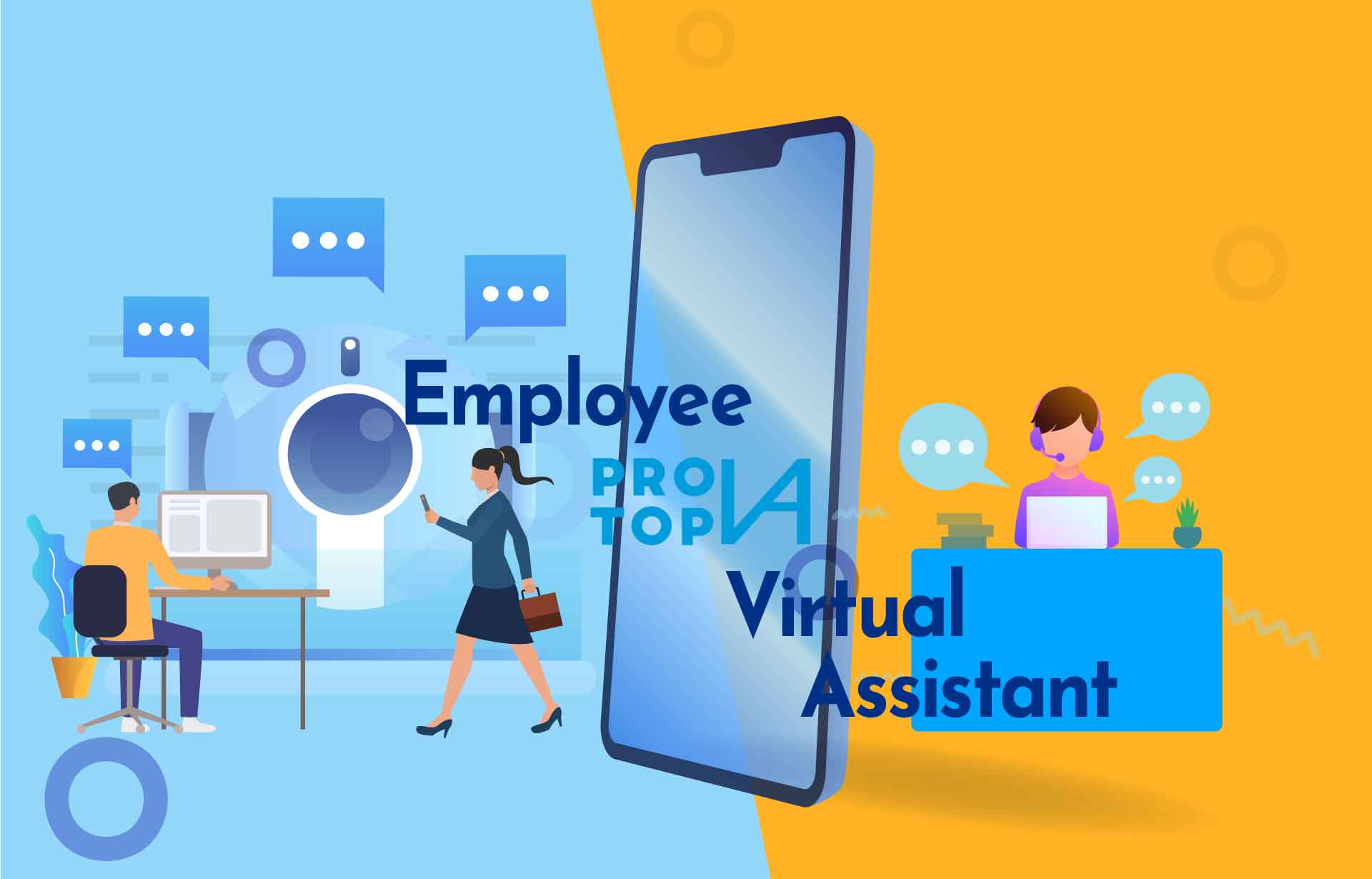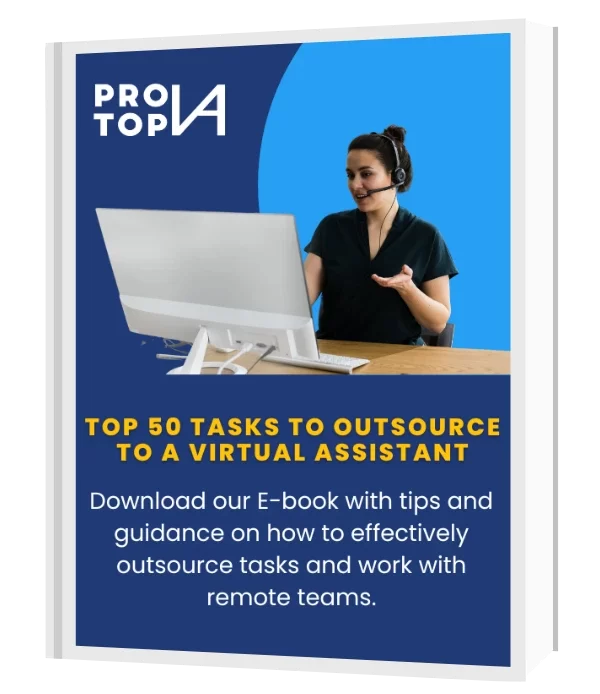In the ever-evolving landscape of the modern workplace, businesses face critical decisions regarding how to structure their workforce. One of the most prominent dilemmas is hiring a traditional employee or hiring a virtual assistant. This choice is now wider than new and small companies; even established enterprises are exploring the benefits of both options.
In this blog, we will explore the key differences between virtual assistants and traditional employees, weighing the pros and cons to help you make an informed decision for your business.
Table of Contents
Defining the Roles: Virtual Assistant vs. Employee
To begin our exploration, we must clarify virtual assistants’ and traditional employees’ roles and responsibilities.
Virtual Assistant:
– Virtual assistants are independent contractors or freelancers who remotely provide administrative, creative, or technical services.
– They typically work on a project basis or for a set number of hours per week or month.
– Virtual assistants often specialize in specific skills or services, such as administrative support, social media management, graphic design, or customer service.
– Communication is primarily through email, phone, or virtual meetings.
Traditional Employee:
– Employees work directly for a company, often full-time or part-time.
– They are typically part of the core team and contribute to various aspects of the business.
– Employees often have a broader set of responsibilities, adapting to the company’s changing needs.
– In-person communication and supervision are more common for employees.
Cost Considerations:
Cost is one of the most significant factors influencing the choice between a virtual assistant and a traditional employee. Let’s break down the financial implications of both options.
Virtual Assistant:
– Lower initial costs: Hiring a virtual assistant involves minimal upfront expenses. You pay for the services you need when you need them.
– No employee benefits: Virtual assistants are not entitled to benefits such as health insurance, paid time off, or retirement plans.
– Variable costs: You can adjust your virtual assistant’s workload based on your business’s immediate needs, allowing for cost control.
– No office space or equipment costs: Virtual assistants use their workspace and equipment, saving you money on office rent and supplies.
Traditional Employee:
– Higher initial costs: Hiring a traditional employee involves various expenses, including recruitment, onboarding, and providing office space and equipment.
– Employee benefits: You must provide benefits such as health insurance, paid time off, and potentially retirement plans, increasing your ongoing costs.
– Fixed costs: Traditional employees require a steady salary regardless of business fluctuations.
– Administrative overhead: Managing employee payroll, taxes, and benefits can be complex and time-consuming.
Flexibility and Scalability:
The flexibility to adapt to changing circumstances is crucial for businesses. Let’s examine how virtual assistants and traditional employees compare in this aspect.
Virtual Assistant:
– Scalability: Virtual assistants are ideal for businesses with fluctuating workloads or seasonal demands. You can quickly scale their hours up or down.
– Specialized skills: Virtual assistants often possess specific expertise, allowing you to tap into niche talents without needing a full-time specialist.
– Geographic flexibility: You can hire virtual assistants worldwide, providing access to a diverse talent pool.
Traditional Employee:
– Limited scalability: Hiring a new employee is a more complex and time-consuming process, making it less flexible for handling rapid changes in workload.
– Broad skill set: Traditional employees may have a broader skill set but may not be as specialized in certain areas as virtual assistants.
– Location-dependent: Traditional employees are typically bound to a specific location, limiting your options for talent acquisition.
Accountability and Management:
Managing and ensuring accountability is a crucial aspect of any workforce. Let’s compare how virtual assistants and traditional employees fare in this regard.
Virtual Assistant:
– Results-driven: Virtual assistant pay is frequently determined by the tasks they accomplish or project milestones, making it easier to measure their performance.
– Self-motivated: Since virtual assistants work remotely, they must be self-disciplined and proactive in managing their workload.
– Limited supervision: Virtual assistants require less direct maintenance, freeing your time for other essential tasks.
Traditional Employee:
– Regular oversight: Traditional employees often require more direct supervision and management, which can be time-consuming.
– In-house collaboration: Employees are part of your core team, allowing in-person partnership, training, and team building.
– Fixed schedules: Traditional employees typically adhere to set working hours and may need to be more flexible in their work arrangements.
Building Company Culture:
Company culture is an intangible but vital aspect of any business. Let’s assess how virtual assistants and traditional employees contribute to building and sustaining company culture.
Virtual Assistant:
– Limited impact: Virtual assistants may have a minor role in shaping or embodying your company culture, as they often work with multiple clients.
– Cultural alignment: Ensuring virtual assistants align with your company’s values and mission can be challenging.
Traditional Employee:
– Culture integration: Traditional employees are more deeply integrated into your company culture and can significantly shape it.
– Team cohesion: In-house employees can foster a stronger sense of teamwork, collaboration, and shared values.
Security and Data Privacy:
The security of your business data and information is paramount. Let’s examine the implications of virtual assistants and traditional employees regarding security and data privacy.
Virtual Assistant:
– Data protection challenges: Virtual assistants may access sensitive information, raising concerns about data security.
– Need for contracts: You must establish clear data security protocols and sign confidentiality agreements with virtual assistants to protect sensitive information.
Traditional Employee:
– In-house control: Employees working in your office can be subject to stricter data security measures, including physical access control.
– Easier enforcement: It’s typically easier to enforce data security policies and confidentiality agreements with in-house employees.
Conclusion: Finding the Right Fit
In the virtual assistant vs. employee debate, there’s no one-size-fits-all answer. The right choice depends on your business’s unique needs and circumstances. Virtual assistants offer flexibility, cost-efficiency, and specialized skills, making them a compelling choice for many tasks. On the other hand, traditional employees contribute to building company culture, offer in-house collaboration, and may be more suitable for roles that require continuous, on-site presence.
Ultimately, the optimal approach for many businesses is a blend of both. By strategically leveraging virtual assistants for specific tasks and in-house employees for core functions, you can create a dynamic and efficient workforce that adapts to your evolving needs.
As the modern workplace evolves, businesses that master the art of balancing virtual assistants and traditional employees will position themselves for success in an ever-changing world. The key is to be adaptable and strategic in your choices, ensuring that your workforce aligns with your business goals and objectives.
Ultimately, the decision between a virtual assistant and a traditional employee is not an “either-or.” It’s a matter of “what and when.” By understanding the strengths and limitations of each option, you can make informed decisions that support your business’s growth and sustainability.



